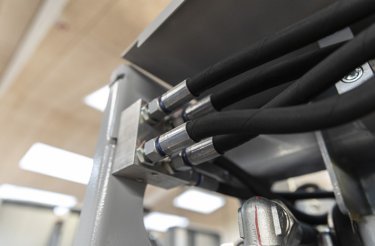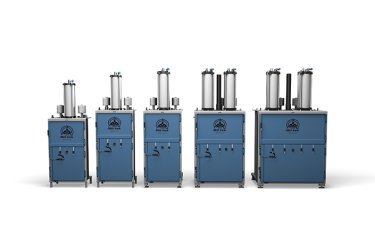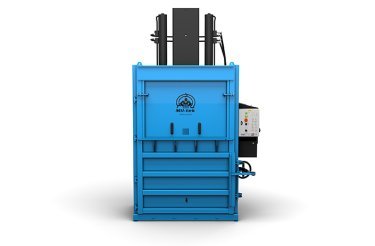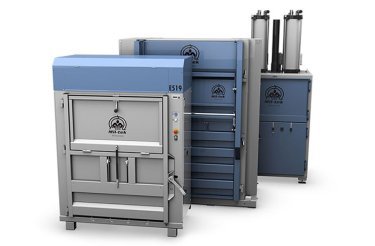
What makes a pneumatic baler different from a hydraulic baler?
You can use our guide to better grasp the distinctions between hydraulic and pneumatic balers for recycling.
Balers for recycling can be either hydraulic or pneumatic
You’ll have to chose between hydraulic and pneumatic balers when deciding whether to install a recycling baler on your company’s property.
These two different kinds of equipment effectively perform the same task: compress recyclable materials like paper, cardboard, and plastic into bales that are simple to move and recycle.
Both devices have an energy source and use that to compress materials.
So what is the distinctions?

Pneumatic
Compressed air provides power for pneumatic balers. The pressing plate is pushed downward by the pressure created by the air filling the top cylinder. The pressing plate is locked down by the pressure without the need for additional power.
Pneumatic balers have no electrical components and only operate on compressed air.

Hydraulic
Electric motors are used by hydraulic balers to pump hydraulic oil. The hydraulic oil causes the rams to exert pressure, which lowers the pressing plate.
A motor that is powered by electricity drives hydraulic balers.

“Compressed air is used by pneumatic balers to depress the pressing plate. Pressing rams are lubricated with hydraulic oil by hydraulic balers, which then provide pressure to the pressing plate.”
Pneumatic vs. hydraulic balers: Additional factors to consider
These two different types of balers might assist your company in effectively managing waste. Each has advantages that are more suitable for a specific type of organization. Typically, it depends on the unique requirements of an organization.

Here are some additional elements to consider when contrasting hydraulic and pneumatic balers
- Volume – Hydraulic balers work well for high volume applications (around one ton per week)
- Size – Pneumatic balers tend to be smaller and more suitable for workspaces with limited space
- Noise – Because hydraulic balers can be fairly noisy, they are frequently positioned outside of the manufacturing area
- Noise – Because pneumatic balers are quieter, they are frequently located near where the production process takes place
- Maintenance – Both hydraulic and pneumatic balers need regular maintenance, while pneumatic balers need less because they don’t have any electrical components
- Power Source – Pneumatic balers can be powered by plugging directly into existing air lines. If not, a modest compressor is needed
- Power – A pneumatic baler uses pressurized air to lock in position the pressing plate once it has been lowered. In order to maintain continuous pressure, hydraulic balers need continual power
- Strength – Although it requires more power to do so, the high pressure of the hydraulic oil applies more downward pressure to the material than does compressed air
- Hygiene – Due to their reduced danger of contamination, pneumatic balers are more suitable for use in food manufacturing plants
Have a question?
To discover more about how Mil-tek New Zealand may help your company handle waste more effectively and save time, space, and money, contact us right away.
Find out more about a product or talk to one of our representatives in your area. Tell us what you need so we can put you in touch with the appropriate person.